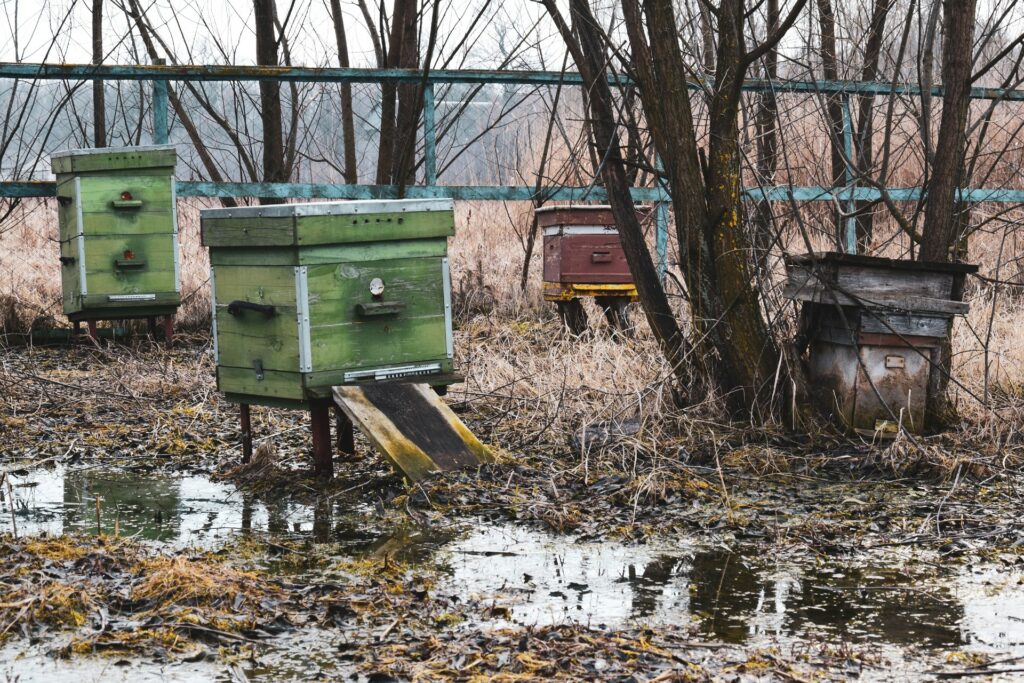California Storms Delay Pollination and Yield Sweeter Honey

This year went down as one of California’s wettest and longest winters. The storms in California devastated some areas but were also an answer to an enduring hope that the drought state would experience a rainy season. However, the back-to-back storms were more than many crops and residents could handle. The continual and prolonged stormy season resulted in beekeepers needing to provide supplemental food and water for otherwise highly independent bees. Many believe that California honey will indeed be sweeter this year due to the storms because of abundant blooms and supplements provided by beekeepers throughout the state to keep their hives alive.
California’s Farmlands and Crops Suffered
What California beekeepers experienced with the long winter and unusual weather was also felt across the farmlands in the state. California crops not only provide a significant amount of food to the nation, but commercial beekeepers send their bees to the almond orchards early in the season to help pollinate the multibillion-dollar almond crops and then move them around the nation to pollinate everything from cherries to avocados, and of course, sweet, delicious honey. The California almond crop pollination is the starting point for the year’s pollination cycle across the United States.
The added moisture from the Pacific Ocean (called atmospheric rivers) and the mighty storms produced freezing conditions in the mountains and flooding throughout the state. The state and farmland experienced flooding, damage, and extended electrical outages. Californians came together to do what they could to save their homes, land, and livestock. Although the drought-ridden state needed rainfall, the abundance of rain was too much to be absorbed into the ground, and crops suffered throughout the state. How the yields in California bounce back will directly affect the food supply for the coming year and undoubtedly impact the cost to consumers.
Bees Hit by California Storms
Bees were impacted by the rainy and cold weather this winter. In addition to a delayed start in pollination, many hives were not able to survive and were washed away in the storms. Almond producers believe the nut crops will be significantly impacted by the slow emergence of bees, adversely affecting nut crops that make up more than 80 percent of the world’s almonds. This year was anticipated to be a boom year for nut crops, but the storms will result in a lower yield, raising prices.
The Bee Pollination Cycle Disrupted
When bees pollinate blooms in the critical almond orchards in California, the years’ pollination cycle begins. However, the bees were delayed as the state experienced unusually chilly temperatures, rain, and wind this winter. The little buzzers took a significantly longer amount of time to pollinate those orchards, so the entire pollination process got a late start. The delay in bees gathering pollen and nectar for nutrition led many concerned beekeepers to help the bees more than normal. Some beekeepers claim they spent twice as much for supplements for their hives than in previous years. Although the extra food for the bees was an added expense, having a hive die is much more costly and a devastating experience for a beekeeper.
Since the almond pollination is delayed, beekeepers across the nation are scrambling to get bees to other locations, such as apple pollination on the east coast. The timeline is shortened, and beekeepers are doing everything they can to keep things on track going forward, which is a challenge.
Why Storms Would Make Honey Sweeter
The increased rainfall will produce abundant wildflower blooms this year, making for a sweet prospect for beekeepers and honey flavors. The ample forage supply for bees will likely be one of the main reasons California’s honey harvests are sweeter this year. Beekeepers are already planning to take their bees to locations throughout the nation to produce certain popular kinds of honey that require plentiful rain, like the coastal areas of California, where bees gather pollen to make the hard-to-get sage honey.
Support Local Beekeepers
The rain of the storms and weather this year tested the abilities of California crops, beekeepers, and bees. The massive dumps of rain triggered floods and mudslides, which will take time to recover. As many experienced losses, supporting your local farmers and beekeepers is more critical than ever. Purchasing locally grown produce, nuts, and honey can help support the economy right in your own backyard.
If you have any questions about beekeeping or how honey may be impacted this year due to the extreme weather, contact a beekeeper in your area. If you are considering beekeeping as a hobby, start small and do your research! Although starting a hive will not stop the decline of bees, it is a gratifying hobby, and many new beekeepers love producing their own honey and other bee products and sharing them with their neighbors.
